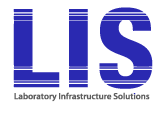Establishing a biosafety level 3 (BSL-3) laboratory is a major investment in institutional capability, scientific infrastructure, and public health security. These laboratories are designed for the safe diagnosis and study of airborne infectious agents such as Mycobacterium tuberculosis, SARS-CoV-2, and other high-consequence pathogens.
Whether the objective is to expand diagnostic capacity, strengthen outbreak response, or support advanced research, BSL-3 facilities must be designed with a high level of technical and operational precision. Fixed, modular, or portable in form, these laboratories must meet strict standards for biosafety, workflow efficiency, and environmental resilience.
This article outlines the six critical domains of planning and implementation that institutions must address when procuring or constructing a BSL-3 laboratory.
1. Site Suitability and Infrastructure Context
Site selection affects both the effectiveness and sustainability of BSL-3 laboratory operations. Key considerations include:
Proximity to sample sources, such as hospitals, border screening points, or outbreak-prone areas. This is essential for reducing transport time and preserving sample integrity.
Access to trained personnel, with advanced biosafety training. Locations near academic or medical institutions offer better staffing continuity.
Utility infrastructure, including stable electricity, clean water, and safe effluent disposal. In underdeveloped areas, autonomous or redundant systems are often required.
Site security and oversight, including controlled access, physical barriers, and institutional support structures.
An ill-suited or under-supported site increases operational risk and undermines long-term laboratory performance.
2. Defining Laboratory Purpose and Operational Scope
Laboratories must be designed around their specific function. BSL-3 facilities typically support:
Diagnostic operations, prioritizing sample throughput and protocol standardization (e.g., PCR-based testing).
Research activities, requiring greater flexibility, experimental workflows, and instrumentation diversity.
Planning should address:
Expected specimen types and volumes.
Workflow logic, from sample reception to waste disposal.
Instrumentation needs, including power demand, footprint, and containment requirements.
Staffing structure, such as supervisory roles, shift coverage, and biosafety training levels.
Clearly defining purpose and scope early ensures architectural and engineering alignment from the outset.
3. Workflow Design as a Biosafety Determinant
A BSL-3 lab’s safety and efficiency depend heavily on its internal workflow. This must be established before architectural layout is finalized.
Key principles include:
Physical separation of zones (clean, transitional, and contaminated).
Unidirectional flow of personnel and materials to reduce cross-contamination.
Strategic placement of autoclaves, Class II biosafety cabinets, and pass-through chambers.
Capacity planning to support increased volume during outbreaks or seasonal surges.
Poorly planned workflow introduces biosafety risks and can necessitate costly post-construction redesign.
4. Equipment Specification and Integration
Equipment must align with both operational protocols and the physical constraints of the facility.
Considerations include:
Method compatibility: Culture, molecular (PCR, RT-qPCR), ELISA, or sequencing platforms each have specific requirements.
Space and access: Equipment must fit without obstructing workflows or violating containment zones.
Power stability: Sensitive instruments require clean, conditioned power in unstable environments.
Serviceability: Maintenance must be achievable within biosafety limits without disrupting operations.
Integration planning should account for installation logistics, power loads, and service clearance.
5. Engineering Design and Environmental Controls
A BSL-3 facility must be engineered to maintain safe operation under varying external conditions and to withstand system failure scenarios.
Essential features include:
HVAC systems maintaining negative pressure, temperature, humidity, and airflow rates.
Durable interior finishes that resist corrosion and are easily decontaminated.
Redundant power systems with automatic switchover capabilities.
Environmental resilience, especially in areas prone to heat, dust, flooding, or seismic activity.
Designs should comply with international biosafety standards including the WHO Laboratory Biosafety Manual (4th Edition) and the applicable regulatory frameworks.
6. Airflow and Containment Performance
Engineered airflow systems are the foundation of BSL-3 containment. These must be continuously validated and maintained.
Key requirements:
Negative pressure gradients to prevent contaminated air from escaping clean zones.
12–20 air changes per hour (ACH) depending on lab function and usage.
No recirculated air, unless routed through certified HEPA filtration.
Airflow alignment with workflow, minimizing turbulence and supporting particle clearance.
Commissioning should include smoke testing, filter integrity verification, and pressure performance pattern description.
Technical Solutions from LIS-Labs
LIS-Labs delivers advanced, factory-tested BSL-3 and BSL-2 laboratory systems for rapid deployment in both high-resource and low-resource environments. Each solution is designed for operational continuity, biosafety compliance, and environmental adaptability.
Our offerings include:
✅ Fully-contained portable BSL-3 laboratories, factory-tested and validated for field deployment
✅ Solar-integrated platforms with battery storage, designed for grid-insecure or off-grid settings
✅ Modular configurations, scalable and customizable to meet expanding program needs
✅ Workflow- and protocol-specific customizations, supporting diagnostic or research applications
Each system is delivered with complete documentation, including site requirements, validation protocols, and operator training.
Built for the Real World: LIS-Labs Can Help
At LIS-Labs, we understand that planning a BSL-3 laboratory is not theoretical—it is practical, high-stakes work. Our solutions are engineered to operate in complex environments, support your scientific goals, and maintain containment integrity in the face of operational challenges.
From research projects to national reference labs, we provide:
Turnkey, mobile-ready containment systems
End-user customization based on diagnostics or research scope
Full support from planning through commissioning and beyond
Let’s Build the Lab You Need
Planning a BSL-3 laboratory requires coordination across biosafety, engineering, clinical operations, and infrastructure development. When done right, it becomes a cornerstone of national laboratory resilience.
Contact us to learn more: www.lis-labs.com/contact-us/
Visit: www.lis-labs.com


